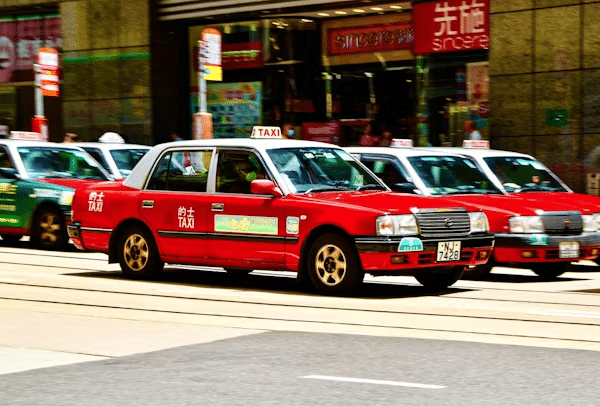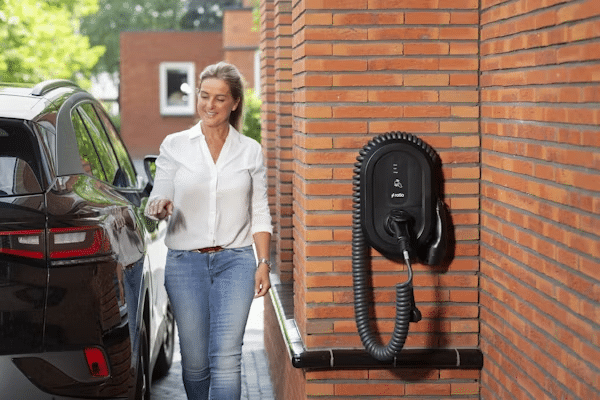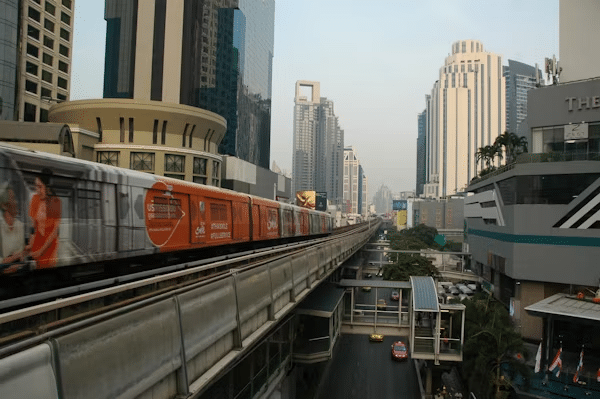Singapore’s reputation as a smart city extends far beyond its futuristic skyline and cutting-edge technology—it’s deeply embedded in how residents and visitors move through the city-state. With one of the world’s most efficient public transportation systems, an evolving landscape of private mobility options, and an ambitious push toward sustainable transportation, Singapore offers a fascinating case study in urban mobility done right.
Whether you’re a first-time visitor planning your itinerary, an expatriate settling into life in the Lion City, or a local resident exploring new ways to navigate your daily commute, understanding the full spectrum of transportation options available can transform your Singapore experience. From the seamless MRT connections to the convenience of on-demand services and the exciting shift toward electric mobility, today’s Singapore presents more transportation choices than ever before—each with its own advantages depending on your specific needs, budget, and values.
This comprehensive guide explores the modern transportation landscape in Singapore, examining how different mobility solutions fit into various lifestyles and situations. We’ll look beyond the obvious choices to help you make informed decisions about how to move through this dynamic city-state efficiently, comfortably, and sustainably.
The Foundation: Singapore’s Public Transportation Excellence
Before diving into specialized transportation options, it’s essential to acknowledge what makes Singapore’s mobility ecosystem so remarkable: its world-class public transportation infrastructure. The Mass Rapid Transit (MRT) system, complemented by an extensive bus network, forms the backbone of how most people move through Singapore. With trains arriving every few minutes during peak hours and stations strategically located throughout the island, the MRT offers unmatched reliability and affordability.
The government’s continued investment in expanding MRT lines—including the Thomson-East Coast Line and the upcoming Cross Island Line—demonstrates Singapore’s commitment to public transportation as the primary solution for mass mobility. These expansions aren’t just about adding more stations; they’re about creating a more interconnected network that reduces travel times and makes previously car-dependent areas more accessible.
However, even the most efficient public transportation system has its limitations. Late-night hours, journeys to areas not well-served by MRT stations, traveling with elderly family members or young children, carrying bulky items, or simply needing door-to-door convenience for important appointments all create scenarios where alternative transportation becomes not just preferable but necessary.
When Convenience Matters: Premium On-Demand Transportation
There are moments when public transportation, despite its efficiency, simply doesn’t fit the situation. Arriving at Changi Airport after a long international flight with luggage in tow, heading to a crucial business meeting where arriving sweaty from a humid walk isn’t an option, or showing elderly parents around the city—these scenarios call for a different solution.
The taxi and private hire vehicle industry in Singapore has evolved significantly over the past decade, moving from traditional street-hail services to sophisticated booking platforms that prioritize reliability, transparency, and customer experience. This evolution has created a tier of premium transportation services that bridge the gap between basic point-to-point travel and luxury chauffeur services.
For those who prioritize consistency, professionalism, and peace of mind, services like STRIDES Premier Best Taxi Provider in Singapore represent this new generation of premium transportation. These services focus on well-maintained vehicles, professional drivers who know the city intimately, and reliable booking systems that eliminate the uncertainty of whether a ride will be available when you need it. The difference becomes particularly apparent during peak hours, rainy weather, or when traveling to business districts where every minute counts.
What distinguishes premium taxi services from standard options isn’t just the quality of vehicles—though that certainly matters—but the entire experience ecosystem. From the ease of booking and transparent pricing to driver professionalism and vehicle cleanliness, these services cater to customers who view transportation not merely as getting from point A to point B, but as an integral part of their daily productivity and comfort. For business travelers, the ability to work during the commute in a comfortable, quiet environment can justify the premium. For families, the assurance of safety and reliability provides invaluable peace of mind.
The pricing structure of premium services typically reflects their value proposition: slightly higher than standard taxis but significantly more affordable than private chauffeur services, occupying a sweet spot that many find worthwhile for important journeys even if they use public transportation for routine trips.

Flexibility and Freedom: The Car Rental Alternative
While on-demand transportation services excel at specific journeys, certain situations benefit from having a vehicle at your disposal for extended periods. Planning a weekend exploration of Singapore’s diverse neighborhoods, needing transportation for a family visiting from overseas, relocating apartments and requiring a vehicle for multiple trips, or simply desiring the freedom to move at your own pace without coordinating bookings—these scenarios make car rental an attractive option.
Singapore’s car rental market has matured considerably, offering everything from basic economy vehicles to luxury cars and specialized vehicles like MPVs for larger groups. The market caters to various rental durations: hourly rentals for quick errands, daily rentals for specific needs, and longer-term arrangements for those who want car access without the commitment and expense of ownership.
What makes car rental particularly appealing in Singapore is the city-state’s excellent road infrastructure and clear signage, making navigation straightforward even for those unfamiliar with the area. The availability of multiple parking options—from HDB car parks to shopping mall facilities—means that the traditional challenge of parking in a dense urban environment is well-managed, though it requires planning and budget consideration.
For visitors and residents evaluating car rental options, understanding the complete cost picture is crucial. Beyond the base rental rate, considerations include insurance coverage, fuel policies, mileage limitations, and parking expenses. Transparent pricing becomes essential, which is why platforms like AKA Car Rental that clearly outline their rental rates and terms help customers make informed decisions without hidden surprises when returning the vehicle.
The flexibility of car rental particularly shines during public holidays and weekends when many Singaporeans take the opportunity to explore the island’s attractions—from the nature reserves and coastal areas to the various cultural neighborhoods that each offer distinct experiences. Having a vehicle transforms these explorations, allowing spontaneous stops and more efficient use of limited leisure time compared to navigating multiple public transportation connections.
Short-term rental also serves as an excellent option for those considering car ownership in Singapore—one of the world’s most expensive places to own a vehicle due to the Certificate of Entitlement (COE) system. Renting for specific needs allows you to enjoy the benefits of having a vehicle when truly necessary without the substantial financial commitment of purchase and ongoing ownership costs.

The Electric Revolution: Sustainable Mobility for the Future
As Singapore advances toward its Green Plan 2030 and ambitious carbon neutrality goals, the transportation sector stands at the forefront of this sustainability transformation. The government has set clear targets: all new car and taxi registrations to be cleaner-energy models from 2030, and all vehicles to run on cleaner energy by 2040. These aren’t distant aspirations—they’re shaping transportation choices today.
Electric vehicles (EVs) have moved from novelty to mainstream consideration in Singapore’s transportation conversation. The expansion of charging infrastructure across the island, from HDB car parks to shopping centers and public parking facilities, addresses what was previously the primary barrier to EV adoption. Government incentives, including rebates and road tax reductions for electric vehicles, make the financial equation increasingly favorable.
What’s particularly interesting is how Singapore’s compact geography actually works in favor of EV adoption. Range anxiety—the fear of running out of battery charge—becomes far less concerning when the entire country spans just 50 kilometers from east to west. Even with conservative battery management, a single charge can easily cover several days of typical driving for most users.
The EV market in Singapore has diversified significantly, moving beyond premium luxury brands to include practical, affordable options that appeal to everyday consumers. Chinese manufacturers have entered the market aggressively, offering competitive pricing and impressive technology. Brands like byd ev vehicle exemplify this trend, bringing established electric vehicle expertise from China’s mature EV market to Singapore consumers who want sustainable transportation without premium luxury pricing.
BYD’s approach—offering various vehicle types from compact sedans to family SUVs and commercial vehicles, all with competitive pricing and proven battery technology—represents the democratization of electric mobility. Rather than EVs being exclusive to early adopters and luxury buyers, they’re becoming accessible to the broader market, which is precisely what’s needed to achieve Singapore’s sustainability goals.
The total cost of ownership calculation for electric vehicles continues to improve. While the initial purchase price may remain higher than equivalent petrol vehicles, the operational savings add up significantly: lower “fuel” costs (electricity vs. petrol), reduced maintenance requirements (fewer moving parts, no oil changes), and favorable road tax treatment. For those who charge primarily at home or during off-peak hours, the cost per kilometer can be substantially lower than conventional vehicles.
Beyond economics, there’s an intangible benefit to EV driving that many owners report: the quiet, smooth operation and instant torque delivery create a driving experience that feels futuristic and refined. In Singapore’s urban environment, where much driving involves stop-and-go traffic, EVs excel with their smooth acceleration and regenerative braking systems that actually recharge the battery during deceleration.

Making Transportation Choices That Fit Your Lifestyle
The diversity of transportation options in Singapore reflects the reality that different situations call for different solutions. A truly smart approach to mobility isn’t about choosing one option exclusively—it’s about understanding when each option serves you best and being able to seamlessly switch between them.
Consider the typical Singapore professional: they might take the MRT for the daily work commute, appreciating the reliability and ability to read or catch up on emails during the journey. The same person might book a premium taxi service for client meetings where arriving fresh and on-time is crucial. On weekends, they might rent a car to explore the island with family or visit relatives. And when considering their next vehicle purchase, they’re weighing whether an electric vehicle aligns with their driving patterns and values.
This multi-modal approach to transportation represents the future of urban mobility—not monolithic solutions but integrated ecosystems where different services complement each other. The key is having access to reliable, quality options in each category so that the choice becomes about what’s optimal for each specific journey rather than settling for whatever’s available.
Technology plays an enabling role in this multi-modal future. Mobile apps that integrate payment, booking, and tracking across different transportation modes make switching between services seamless. Real-time information about public transportation schedules, traffic conditions, and parking availability helps optimize transportation decisions. And as autonomous vehicles and other emerging technologies mature, Singapore’s regulatory framework and infrastructure investments position it to adopt these innovations quickly.
Practical Considerations for Visitors and New Residents
For those new to Singapore, understanding the transportation landscape requires some cultural context. Singaporeans generally have high expectations for service quality, punctuality, and cleanliness—standards that apply equally to transportation services. This creates a competitive environment where providers must consistently meet these expectations to succeed, which benefits all users.
Visitors should note that while Singapore is extremely safe and well-regulated, understanding basic transportation etiquette enhances the experience. For taxis and private hire vehicles, booking through established platforms provides better protection and recourse than street-hail services. When renting cars, familiarize yourself with Singapore’s strict traffic laws—speed cameras are ubiquitous, and penalties for violations are substantial but fair.
For those relocating to Singapore, resist the urge to immediately purchase a vehicle. Given the high costs of car ownership, many long-term residents find that combining public transportation, occasional premium taxi services, and periodic car rentals meets their needs more economically. Only after living in Singapore for several months can you accurately assess whether car ownership truly benefits your specific lifestyle.
The transportation decision also connects to housing choices. Living near an MRT station significantly impacts daily convenience and can even affect property values. Similarly, if considering electric vehicle ownership, checking whether your residential property has or can install charging facilities becomes essential.
Looking Ahead: Singapore’s Transportation Future
Singapore’s transportation landscape continues to evolve rapidly. The ongoing expansion of MRT lines will bring more areas within easy reach of rail transit. The electric vehicle charging network is expanding aggressively, with targets for thousands of charging points island-wide. Autonomous vehicle trials are progressing, potentially transforming on-demand transportation in the coming decade.
What remains constant is Singapore’s commitment to creating an integrated, efficient, and sustainable transportation ecosystem that serves diverse needs. Whether through world-class public transit, reliable premium services, flexible rental options, or cutting-edge electric vehicles, the goal is ensuring that everyone can move through the city-state efficiently and comfortably.
The choice of transportation mode becomes less about compromise and more about optimization—selecting the right tool for each journey based on your specific needs, timeline, budget, and values. In a city as forward-thinking as Singapore, that’s exactly how modern urban mobility should work.
As Singapore continues its journey toward becoming a truly smart and sustainable city, its transportation evolution offers lessons for urban centers worldwide: invest in excellent public infrastructure as the foundation, support diverse private sector solutions that fill specific niches, embrace sustainable technologies through thoughtful incentives, and always keep the focus on user experience and accessibility. For residents and visitors alike, this approach translates into practical reality: getting around Singapore is efficient, reliable, and increasingly aligned with environmental goals—a combination that defines modern urban living at its best.
